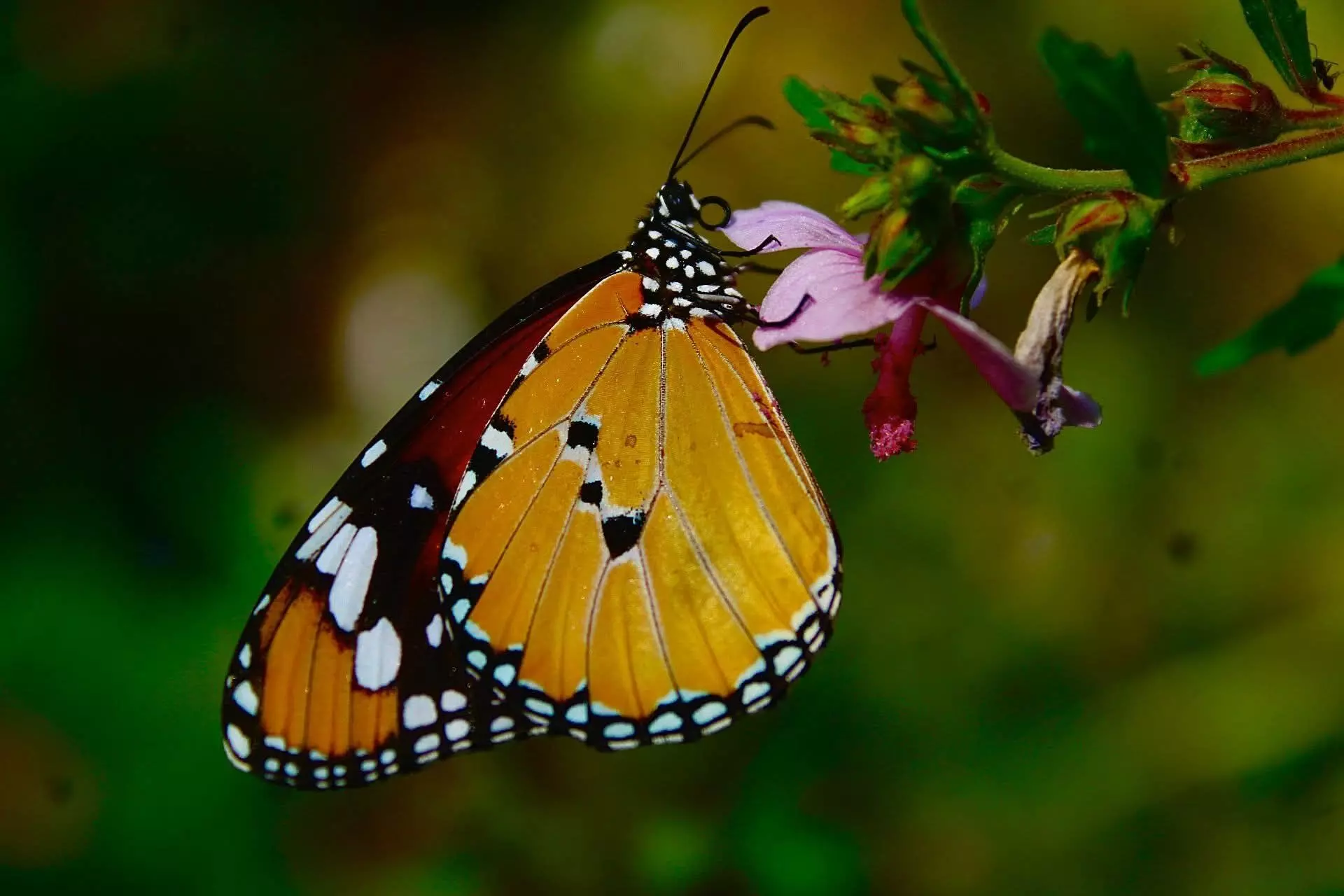A step-by-step guide to turn your garden into a butterfly haven
To attract butterflies, one can plant a variety of nectar-rich, colourful flowers in a sunny, sheltered spot
By Beyniaz Edulji
Hyderabad: Butterflies add beauty to every garden. They are also important pollinators and contribute significantly to the conservation of ecology.
How to attract butterflies
To attract butterflies, one can plant a variety of nectar-rich, colourful flowers in a sunny, sheltered spot.
You also need to provide host plants for caterpillars, such as milkweed and ensure there is a water source, like a shallow dish with wet sand. Avoid using chemical pesticides and opt for organic pest management instead.
1. Go organic
Avoid chemical pesticides and fertilisers, as they can harm butterflies and caterpillars. Leave some weeds. Many native wildflowers and even some weeds serve as important food sources for caterpillars that turn into butterflies.
2. Let some grass grow
A patch of longer grass can provide food for many species of butterfly larvae. Removing weeds destroys the next butterfly generation long before it hatches.
3. Provide food
Plant nectar-rich flowers: Butterflies are drawn to bright, colourful flowers like reds, yellows, purples and pinks. Examples include phlox, hollyhock, sunflower, zinnia, salvia and marigold.
4. Plant host plants
These are plants that caterpillars eat. For example, milkweed is crucial for most species, while dill can attract Black Swallowtails.
5. Variety
Choose a range of flowers with different shapes to attract a variety of butterflies.
6. Plant in groups
Planting flowering plants in groups of three to five makes them easier for butterflies to spot.
7. Provide sunlight
Butterflies are cold-blooded and need the sun to warm up. Place your garden in a spot that gets at least six hours of sun, with an area that catches the morning sun.
8. Offer shelter
Use shrubs, trees or a log pile to provide windbreaks and a place for butterflies to rest or hide.
9. Add a water source
Butterflies need water, salts and minerals. Use a shallow dish with wet sand or a bird bath with rocks for them to sit on.
Best food sources
When it comes to food sources for butterflies, not all plants attract butterflies. Some butterfly species are selective about the types of plants they feed on.
While many plant varieties can attract butterflies, some are better than others for providing essential nutrients.
Adult butterflies and their offspring differ in the way they consume food. Adults drink through a long tubular tongue, relying solely on liquid sources such as flower nectar, tree sap and fallen fruit. Butterfly larvae have chewing mouth parts, feeding on leafy food sources such as milkweed foliage, herbs, trees and grasses.
Flowering plants
By learning which plants and flowers are the best food sources, one can attract and support butterflies in your garden. Here are some of the most suitable ones:
Aster
Among the most valuable butterfly plants, this winter plant is a host plant with its daisy-like blooms. It is a good food source for migrating butterflies.
Black Eyed Susan
This grows in open woodlands, meadows and roadsides. This common wildflower has daisy-like flowers that appeal to many butterflies.
Butterfly Bush
This is one of the main plants for attracting a variety of butterflies.
Golden Rod
This is a strong wildflower with beautiful plume-shaped flowers. It grows along roadsides, in open meadows and woodlands. The blooms are an important late-season nectar source for many butterfly species.
Hollyhock
These easy-to-grow plants produce large, open-faced flowers which appeal to a wide range of adult butterflies.
Milkweed
Milkweed, also known as butterfly weed, is one of the most essential butterfly plants, as milkweed is the sole food source for some butterfly larvae.
Home gardeners can play a crucial supporting role by providing a way station for migratory butterflies. Dozens of species are attracted to the colourful flowers.
Phlox
This large group of flowering plants come in a range of flower colours, forms and sizes. It provides an invaluable source of nectar. Clusters of long-blooming star-shaped flowers appeal to many butterflies, including swallowtails.
Salvia
This plant with scented foliage is long-lived, reliable and drought-tolerant. Spiky or tubular flowers appeal to many butterfly species.
Sunflower
These summer flowers are attractive to a wide range of pollinators. These tall plants with large disk-shaped flowers are a rich nectar source for dozens of butterfly species.
Zinnia
These come in a rainbow of bright tropical hues that butterflies love. Use this cheerful, warm-season bloomer in a border or kitchen garden to attract butterflies and bees, which will help pollinate edible crops. This easy-care plant will reward with months of continuous bloom.
Butterfly survey in Mulugu
Earlier this month, more than 80 butterfly species were discovered during a four-day survey in Mulugu.
Some of the migrant butterfly species recorded during the survey were Angle, Small Flat, Red Eye, Grizzled Skipper, Black Rajah, Tawny Rajah, Oak Blue and Nawab.
These butterfly species were identified during the first-ever butterfly and moth survey at Eturnagaram Wildlife Sanctuary in Mulugu district. The survey was conducted jointly by the Orugallu Wildlife Society and the Forest Department from November 6 to 9 and it attracted 60 participants from all over India.
Representatives of the society and forest officials said that of the 150 butterfly species found in Telangana, over 80 were identified in the sanctuary.
Around 60 researchers, photographers and environmentalists from different states took part in the survey and documented the natural diversity.
Participants were presented with certificates of appreciation.